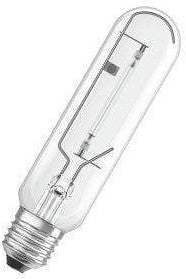-
PHILIPS Master HPI Plus BU E40
Regular price From $ 42.00 SGDRegular priceUnit price / per$ 45.00 SGDSale price From $ 42.00 SGDSale -
Osram Mercury Blended 160W HWL E27
Regular price $ 11.00 SGDRegular priceUnit price / per$ 13.00 SGDSale price $ 11.00 SGDSale -
PHILIPS SON-T E27/E40
Regular price From $ 19.00 SGDRegular priceUnit price / per$ 21.00 SGDSale price From $ 19.00 SGDSale -
Osram Powerstar HQI-TS Excellence
Regular price From $ 26.00 SGDRegular priceUnit price / per$ 27.00 SGDSale price From $ 26.00 SGDSale -
 Sale
SalePHILIPS HPI-T E40
Regular price From $ 245.00 SGDRegular priceUnit price / per$ 267.00 SGDSale price From $ 245.00 SGDSale -
Philips Lighting 20W Master Colour Candle Metal Halide Lamp GU6.5, 3000K x2PCs
Regular price $ 111.00 SGDRegular priceUnit price / per$ 111.00 SGDSale price $ 111.00 SGD -
Philips Lighting Candle Master Colour Metal Halide Lamp G12, 4200K x3PCs
Regular price From $ 101.00 SGDRegular priceUnit price / per$ 101.00 SGDSale price From $ 101.00 SGD -
 Sale
SalePHILIPS MH E27/E40
Regular price From $ 33.00 SGDRegular priceUnit price / per$ 35.00 SGDSale price From $ 33.00 SGDSale -
PHILIPS MHN-TD RX7s x8PCs
Regular price From $ 200.00 SGDRegular priceUnit price / per$ 200.00 SGDSale price From $ 200.00 SGD -
Osram Powerstar HQI-TS Short Arc
Regular price From $ 316.00 SGDRegular priceUnit price / per$ 338.12 SGDSale price From $ 316.00 SGDSale -
 Sale
SaleOsram NAV-T
Regular price From $ 15.80 SGDRegular priceUnit price / per$ 16.91 SGDSale price From $ 15.80 SGDSale -
Venture 150 W Elliptical SON-T Sodium Lamp x5PCS
Regular price $ 110.00 SGDRegular priceUnit price / per$ 110.00 SGDSale price $ 110.00 SGD -
OSRAM Vialox NAV-E 150 W SUPER 4Y High-Pressure Sodium Vapor Lamps x12Pcs
Regular price $ 360.00 SGDRegular priceUnit price / per$ 360.00 SGDSale price $ 360.00 SGD -
EYE SUNLUX ACE NH940LX 940W High Pressure Sodium Lamp
Regular price $ 265.00 SGDRegular priceUnit price / per$ 287.00 SGDSale price $ 265.00 SGDSale -
Venture Lighting 1 kW Clear Tubular SON-T Lamp E40, 2000K Delight
Regular price $ 118.00 SGDRegular priceUnit price / per$ 128.00 SGDSale price $ 118.00 SGDSale -
Venture 250W 4000K E39 Base Metal Halide Prob Start Lamp
Regular price $ 46.50 SGDRegular priceUnit price / per$ 50.00 SGDSale price $ 46.50 SGDSale
Collection: Metal Halide Bulbs
A metal-halide lamp is an electrical lamp that produces light by an electric arc through a gaseous mixture of vaporized mercury and metal halides(compounds of metals with bromine or iodine). It is a type of high-intensity discharge (HID) gas discharge lamp. Developed in the 1960s, they are similar to mercury vapor lamps but contain additional metal halide compounds in the quartz arc tube, which improve the efficiency and color rendition of the light. The most common metal halide compound used is sodium iodide. Once the arc tube reaches its running temperature, the sodium dissociates from the iodine, adding orange and reds to the lamp's spectrum from the sodium D line as the metal ionizes. As a result, metal-halide lamps have a high luminous efficacy of around 75–100 lumens per watt, which is about twice that of mercury vapor lights and 3 to 5 times that of incandescent lights, and produce intense white light. Lamp life is 6,000 to 15,000 hours. As one of the most efficient sources of high CRI white light, metal halides as of 2005 were the fastest-growing segment of the lighting industry. They are used for wide area overhead lighting of commercial, industrial, and public places, such as parking lots, sports arenas, factories, and retail stores, as well as residential security lighting and automotive headlamps (xenon headlights).
The lamps consist of small fused quartz or ceramic arc tube which contains the gases and the arc, enclosed inside a larger glass bulb that has a coating to filter out the ultraviolet light produced. They operate at a pressure between 4 and 20 atmospheres and require special fixtures to operate safely, as well as an electrical ballast. Metal atoms produce most of the light output. They require a warm-up period of several minutes to reach the full light output.

















